#nutria
Text
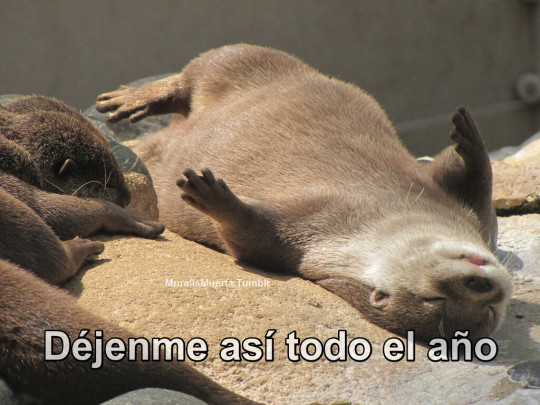
#mimir#dormir#descansar#chill#meme#momo#momos#letras#nutria#animal#mascota#palabras#frases#citas#textos#imagenes#shitposting
3K notes
·
View notes
Text
English added by me :)
2K notes
·
View notes
Text



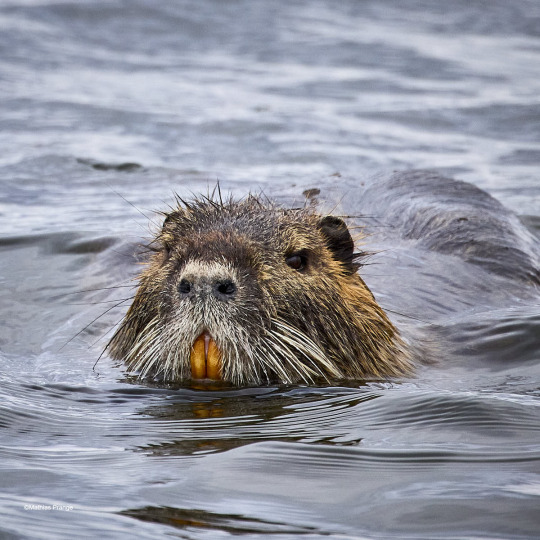
No beaver!
85 notes
·
View notes
Text
Quieres una nutria. Yo también.
141 notes
·
View notes
Text

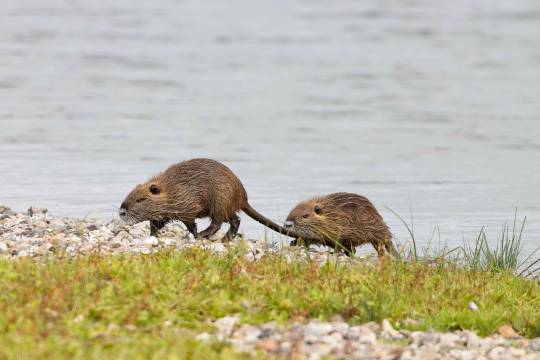


Nutria are native to South America. Here they are considered an invasive species that can cause problems for the local nature and can damage dikes. I took a picture of this parent and child in a nature reserve and the local birds were quite chilled about the pair.
56 notes
·
View notes
Photo

Source details and larger version.
My collection of rats and mice, some giant, some playing while the cat's away.
20 notes
·
View notes
Text



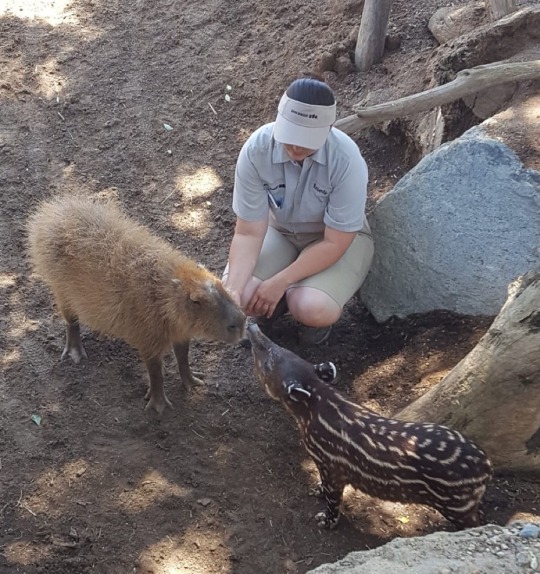






For @oonajaeadira
(I know the second part of the video is a Nutria but it is too cute so I had to share)
120 notes
·
View notes
Text
top five reasons why nutrias are the best animals to ever live

number 5) they swim in my towns river, they flap their little legs around to keep their heads above the water, they eat invasive species
Number 4) they are cute :]
Number 3) they keep company to the ducks while repairing themself from the cold in the vegetation surrounding whatever body of water they reside in
Number 2) they are essentially big rats, but cuter and sillier.
Number 1) Jerma and Harry Du Bois coded
24 notes
·
View notes
Text

15 notes
·
View notes
Text

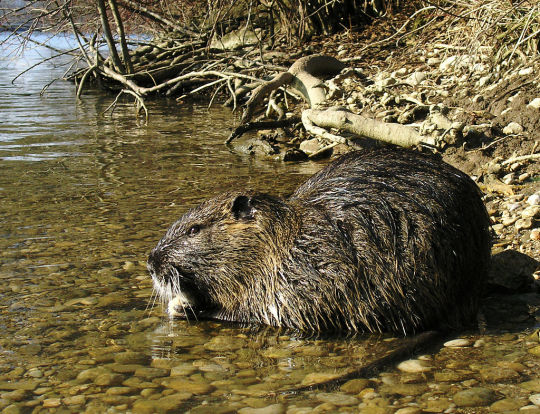
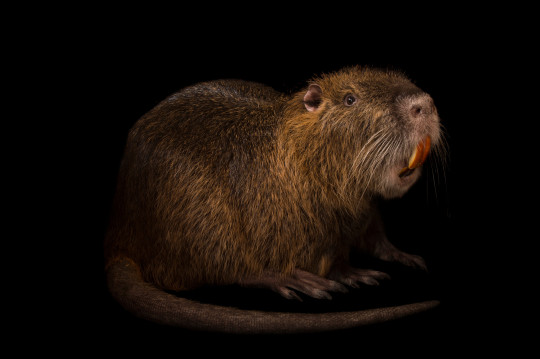
Noticing the Nutria
The nutria, or coypu (Myocastor coypus) is a species of rodent native to the lakes and wetlands of South America, from Bolivia to Tierra del Fuego in Chile and Argentina. It is often confused with capybara or beavers due to its size and shape; adults are typically 4-9 kg (9-20 lbs) and 40-60 cm (16-24 in) long. The fur is brown, and like its look-alikes the coypu has four large incisors that are a distinct orange color, which comes from the high amounts of iron in the enamel. M. coypus can be distinguished from other large rodents by its tail, which is long and slender-- ideal for swimming.
In addition to its thick three layers of fur, the nutria has several adaptations for a semi-aquatic life. Four of the five digits on the hind feet are webbed, and they have strong lungs that allow individuals to remain submerged for up to ten minutes. Females have nipples high on their flanks, to allow their young to suckle while they float in the water. The coypu's large teeth are used to feat on aquatic plants, as well as small animals like snails and mussels. Both the teeth and the tail are also used to deal with predators; when evading birds of prey, alligators, garfish, and other mammals the nutria will try to swim away, while the teeth can be used to deter turtles, snakes, and smaller predator fish.
In their native habitat, survival rates for M. coypus are extremely low. 80% of nutrias die within their first year, and it's rare for individuals to exceed three years of age in the wild. Males reach sexual maturity at 4 months old, while females can become sexually mature at only 3 months. Nutria are highly social, and can live in groups of 2-13 individuals, usually a large male and several mates and their litters. These groups construct platforms out of vegetation and burrows in muddy river banks- reaching up to 15 m (50 ft)-- where they mate and raise their young.
Mating occurs year-round, and it's not uncommon for a female to have 2 or 3 litters in a year. Gestation of a litter lasts about 130 days, after which she gives birth to an average of 5-7 young, though it may be as many as 14. Baby coypu are born with their eyes open, and can swim and feed on vegetation only hours after birth. These pups only remain with her for 4-8 weeks, after which they are weaned and either join the group as adults or leave to find another colony. This allows their mother to prepare herself for another litter-- an important task, as she is ready to become pregnant again the day after giving birth.
Conservation status: The IUCN has yet to rate the nutria, although studies have suggested they're disappearing from their native rivers and lakes. Conversely, M. coypus is highly invasive in parts of North America, Europe, Asia, and Africa, where it has been introduced by fur ranchers.
If you like what I do, consider leaving a tip or buying me a kofi!
Photos
Greg Lasley via iNaturalist
Petar Milošević via Wikipedia
Joel Sartore
#nutria#coypa#Rodentia#Echimyidae#spiny rats#rodents#mammals#wetlands#wetland mammals#lakes#lake mammals#rivers#river mammals#freshwater fauna#freshwater mammals#south america#southern south america#animal facts#biology#zoology
162 notes
·
View notes
Text

Nutria are resilient. The South American mammals have been thriving in their non-native North American habitats over the last 70 years, often at the expense of the local ecosystem.
Nutria: The invasive, unusually large rodents
Nutria, also known as coypu or swamp rats, are large rodents that wreak havoc on their non-native ecosystems.
(Image credit: Shutterstock)

Nutria have bright orange front teeth and a long, rat-like tail.

Nutria become sexually mature before they're even a year old, and can have multiple litters each year.
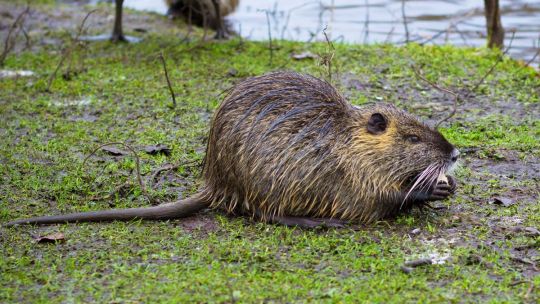
Nutria aren't picky eaters, which is one of the reasons why they're so destructive.
15 notes
·
View notes
Photo

Nutria
24 notes
·
View notes
Text

58 notes
·
View notes
Text

Nibbling time in the swamp
277 notes
·
View notes
Text
358 notes
·
View notes
